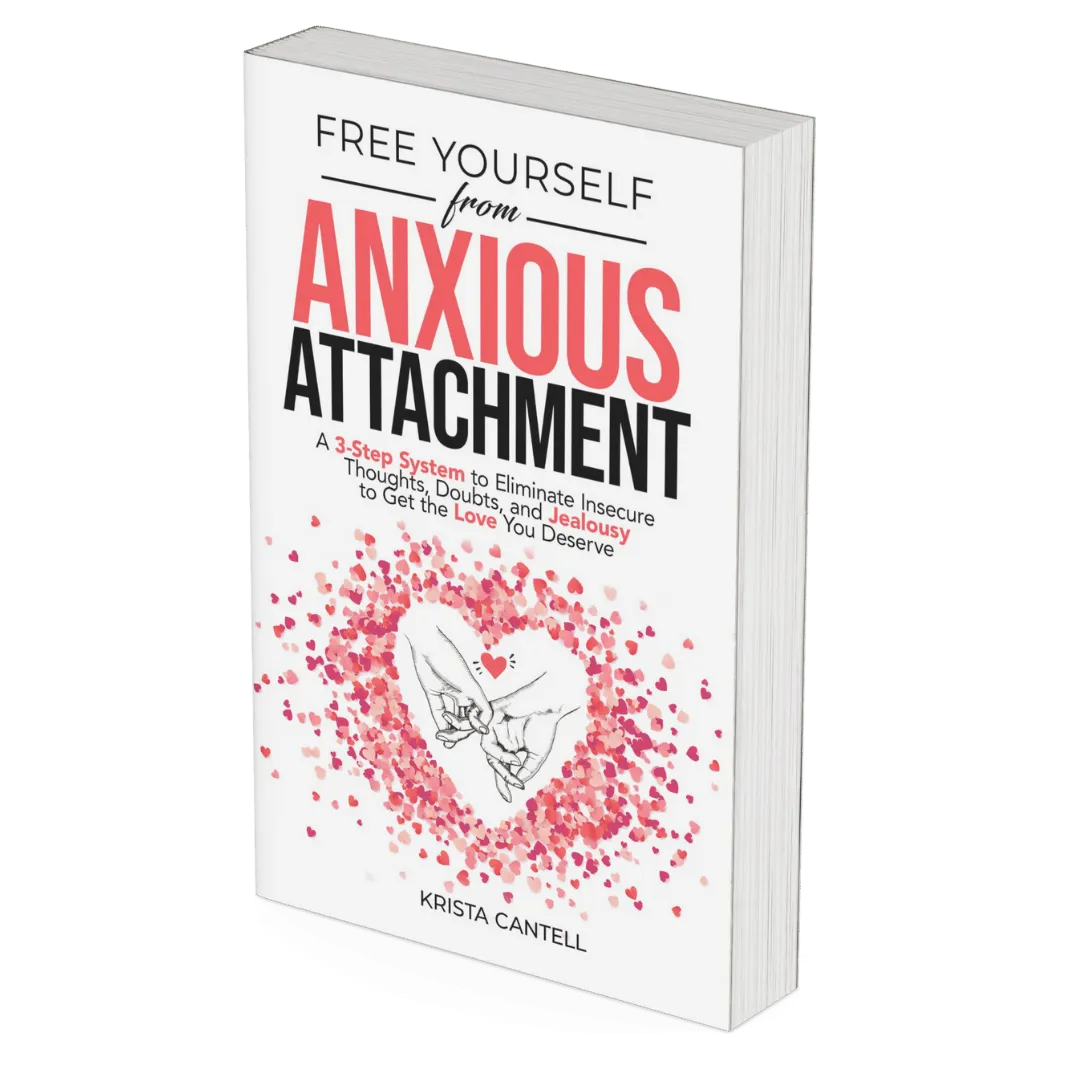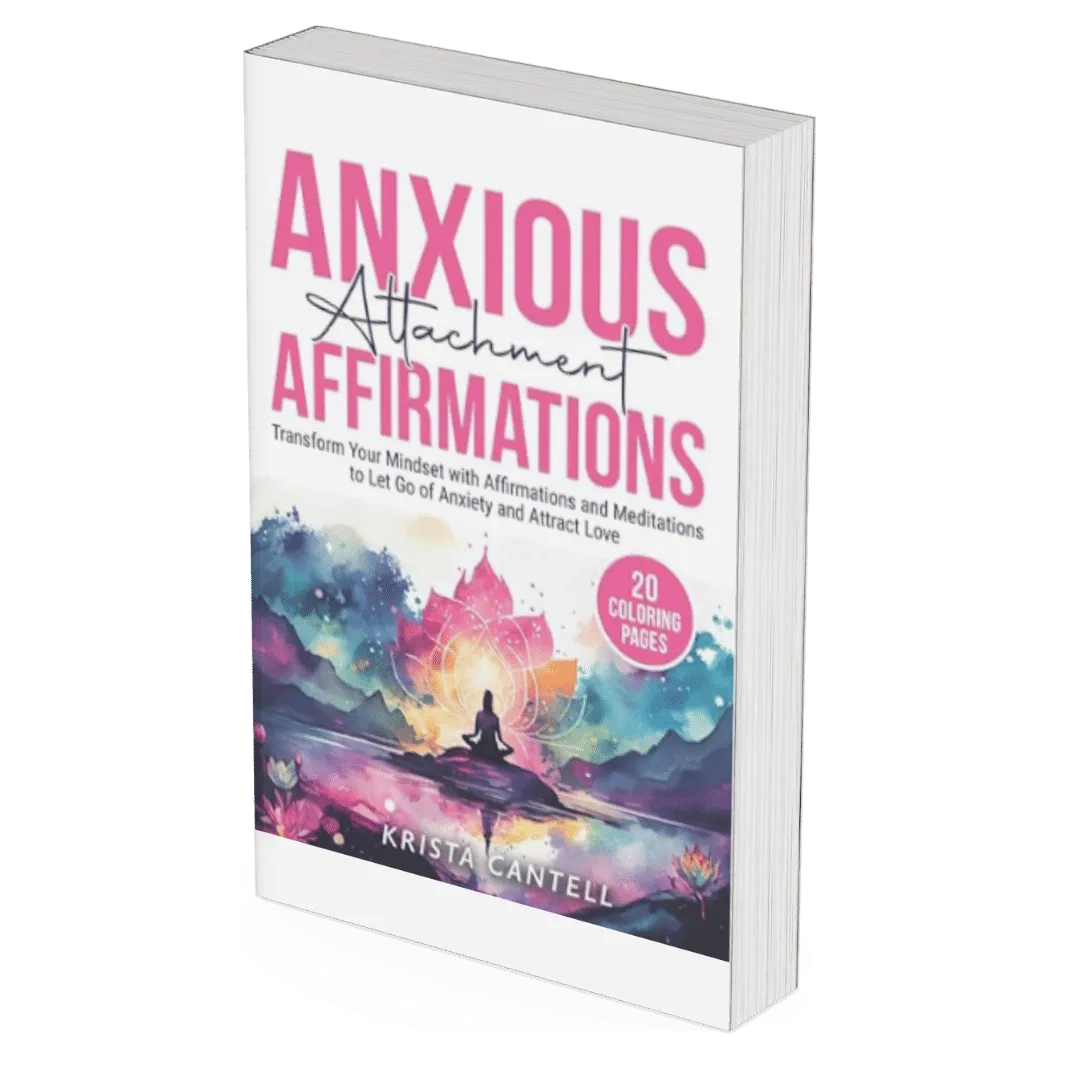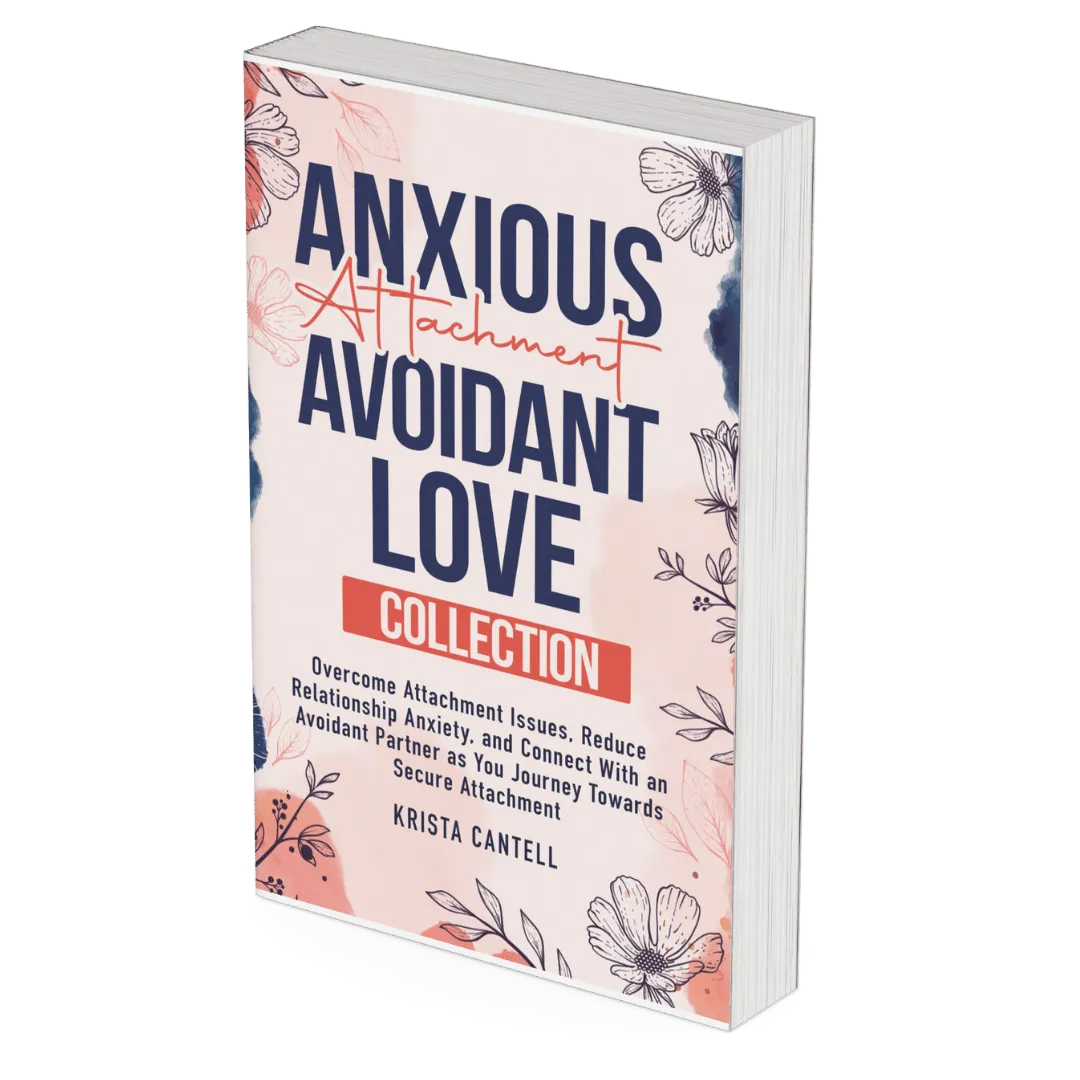Empowering Connections and Transforming Love
Attachment Theory Books for Lasting Love
Dive into our carefully curated selection of transformative books, enriching courses, and expert therapist recommendations, all designed to empower you with the knowledge and tools to build deeper, more fulfilling connections. Whether you're seeking to understand your relationship patterns, improve communication with your partner, or simply enrich your personal growth journey, Attachment Theory Books is here to light the way. Start your journey towards stronger, healthier relationships today!
FEATURED ATTACHMENT BOOKS THIS MONTH
Transform Your Love Life
Transform Your Love Life by embracing a secure attachment style with your partner. Discover the essence of enduring love through attachment theory, fostering deeper empathy, trust, and emotional connection. Our resources offer insights and practical tools to help you and your partner grow together, strengthening your bond. Whether starting anew or enriching an existing relationship, a secure attachment approach leads to a more fulfilling, loving partnership. Start your transformative journey with us and elevate the quality of your relationship.

Attachment Theory Books & Resources

Attachment Book Recommendations
Explore the transformative world of attachment theory with our handpicked book recommendations. Start your self-help journey with us, and unlock the secrets to a more fulfilling love life through the power of knowledge and self-discovery.
Connect with Therapists
Connect with the right support on your journey to healthier relationships. We offer easy access to a network of therapists specializing in attachment theory. Find the perfect match for your unique needs and start working towards a more secure, fulfilling partnership with expert guidance.

From The Attachment Theory Books Blog

The Anxious and Avoidant Attachment Couple
Relationships, the bedrock of human connection, are often a dance of push and pull, especially when it comes to different attachment styles. One of the most challenging yet prevalent dynamics is that of the anxious and avoidant attachment couple. This pairing, characterized by opposing approaches to intimacy and connection, can result in a cycle of unmet needs and emotional turmoil. Understanding this dynamic is crucial for those trapped in its dance, as it can lead to significant growth and healing.

Anxious and Avoidant Attachment Differences
Let’s talk about the intricacies of anxious and avoidant attachment styles, it becomes evident why they not only clash but also paradoxically attract each other, leading to a situation that occurs with surprising frequency in relationships.
The anxious partner, with their deep-seated fear of abandonment and longing for closeness, often finds strange comfort in the challenge posed by the avoidant partner's aloofness. This aloofness inadvertently triggers the anxious partner's desire for intimacy and reassurance, sparking a pursuit that can feel both exhilarating and essential to their emotional well-being.
On the other hand, the avoidant partner, who typically shies away from emotional dependence and values autonomy, is often initially drawn to the anxious partner's expressiveness and emotional availability. This dynamic creates a push-pull dance that is fraught with tension yet underscored by a compelling and often unconscious attraction.
This attraction, however, is not just a random occurrence but a reflection of deeper psychological underpinnings. For the anxious partner, the avoidant's elusiveness mirrors the inconsistent responsiveness they may have experienced in early life, making it a familiar, albeit uncomfortable, pattern to engage with. Conversely, the avoidant partner, often used to suppress their emotional needs, might find the anxious partner's emotional intensity both intriguing and affirming, albeit overwhelming.
This mutual yet conflicting attraction lays the groundwork for a relationship dynamic where both partners navigate a complex maze of emotional highs and lows, often without understanding the core reasons behind their drawn-out dance. It's in the unraveling and understanding of these attachment styles that individuals can begin to break free from these patterns, seeking healthier and more fulfilling connections.
Let's Breakdown The Anxious Attachment Style 👊
Derived from early childhood experiences where caregivers were inconsistently responsive, individuals with an anxious attachment style often live in fear of abandonment. They crave closeness and reassurance in their relationships and are highly sensitive to their partner's moods and actions.
Characteristics include:
A constant need for reassurance and affection
Heightened sensitivity to perceived relationship threats
Tendency to be overly dependent on the partner
Avoidant Attachment
In contrast, avoidant attachment arises from a history of caregivers who were emotionally distant or overly independent. Individuals with this style value their independence to the extent that intimacy feels invasive. They often maintain emotional distance and dismiss the importance of relationships.
Characteristics include:
A preference for emotional and physical independence
Discomfort with deep intimacy and vulnerability
Tendency to withdraw during conflict or stress
The Anxious and Avoidant Attachment Trap
The pairing of an anxious and an avoidant partner creates a complex and often frustrating dynamic. The anxious partner's need for closeness can feel overwhelming to the avoidant partner, who then withdraws to maintain their sense of independence. This withdrawal triggers the anxious partner's fears, leading them to further seek closeness and reassurance.
Common Scenarios and Pain Points
1. Vicious Cycles of Pursuit and Withdrawal: The anxious partner's pursuit can lead to the avoidant partner feeling suffocated, causing them to withdraw. This withdrawal then triggers the anxious partner to pursue even more, creating a relentless cycle.
2. Misaligned Communication Styles: The anxious partner may need constant communication and validation, while the avoidant partner values solitude and might perceive this need as clingy or smothering.
3. Conflict Exacerbation: Conflicts can escalate quickly as the anxious partner seeks resolution and closeness, while the avoidant partner withdraws, leading to unresolved issues and increased resentment.
4. Emotional Dissatisfaction: Over time, both partners may feel emotionally unfulfilled - the anxious partner feeling unloved and insecure, and the avoidant partner feeling pressured and misunderstood.

An Anxious Avoidant Scenario: Chasing Shadows
Once upon a modern cityscape, there lived a couple named Emily and Mark, whose love story was as complex as the woven threads of a tapestry. Emily, with her heart on her sleeve, was the epitome of an anxious attachment style. Mark, on the other hand, was the quintessence of avoidant attachment - a fortress unto himself.
Their story began like any other, filled with the sweet nectar of new love. Emily cherished each moment spent with Mark, finding solace in his presence. Mark, initially drawn to Emily's vibrant energy, enjoyed the novelty and excitement of the relationship.
As time wended its way through seasons, the initial euphoria began to ebb, unveiling the stark realities of their contrasting attachment styles. Emily, who craved constant reassurance and closeness, found herself increasingly unsettled by Mark's need for space and independence.
...The Tipping Point
A common yet pivotal scenario unfolded one chilly autumn evening. Emily had been looking forward to spending the weekend together with Mark. She envisioned a cozy time, basking in the warmth of each other's company. However, Mark, feeling the weight of the week's stress and craving solitude, casually mentioned his plan to spend the weekend alone hiking in the mountains.
This struck a raw nerve in Emily. Her mind raced with anxious thoughts - was she not important enough? Was he losing interest? In her distress, she confronted Mark, her words tinged with fear and accusation. Mark, feeling cornered and suffocated by Emily's emotional intensity, responded with cold detachment, expressing his need for space.
...The Downward Spiral
This incident sparked a series of similar confrontations. Emily's anxious tendencies led her to seek more reassurance, manifesting in constant texts and calls, an ever-present need for affirmation of Mark's feelings. Mark, in turn, retreated further into his shell, perceiving Emily's actions as overwhelming and intrusive.
Each encounter left Emily feeling more abandoned and Mark more smothered. Their conversations, once filled with laughter and dreams, now became minefields of anxiety and defensiveness.
...The Inevitable End
The culmination came on a bleak winter evening. After another heated argument, where Emily's pleas for closeness clashed with Mark's insistence on independence, the fragile thread that had held them together snapped. Mark, feeling trapped, decided to end the relationship, believing that his need for space could never coexist with Emily's need for closeness. Emily, heartbroken, felt her worst fears confirmed - abandonment.
In the wake of their breakup, Emily spiraled into a whirlpool of self-doubt and grief. Mark, though relieved to regain his independence, couldn't shake off a sense of loss and emptiness. Their story serves as a poignant reminder of how contrasting attachment styles, when left unaddressed, can lead to a chasm too wide to bridge.
A Lesson Learned
Emily, through her journey of healing, learned the importance of understanding her attachment style and working towards a more secure stance. She realized that her fear of abandonment often clouded her perception of reality. Mark, in his solitude, reflected on his difficulties with intimacy and acknowledged how his avoidant nature contributed to the relationship's demise.
Their story, though tinged with sadness, is a powerful lesson on the complexities of love, attachment, and the importance of self-awareness in relationships.

Breaking the Push Pull Cycle
Recognizing and understanding these attachment styles is the key to breaking this cycle. This involves both partners acknowledging their patterns and working towards a secure, balanced relationship.
Strategies for Anxious Partners:
Self-soothing Techniques: Learn methods to manage anxiety and maintain emotional independence.
Effective Communication: Express needs and fears without blame or desperation.
Strategies for Avoidant Partners:
Recognize the Need for Connection: Understand the importance of intimacy and emotional sharing in a relationship.
Healthy Boundaries: Communicate needs for space without completely withdrawing.
Journey Towards Secure Attachment
The journey towards cultivating a secure attachment in a relationship transcends mere adaptation to each other’s behaviors; it fundamentally hinges on a deep, empathetic understanding of each partner’s underlying attachment style. This understanding serves as a beacon, guiding couples through the often tumultuous seas of emotional interplay. When partners invest time and effort in comprehending the roots of their attachment styles, they lay the groundwork for a more profound, empathic connection that honors their individual needs and fears.
For instance, an anxious partner’s need for constant reassurance isn’t just a clingy trait, but a response to deep-seated fears of abandonment and insecurity. Recognizing this, an avoidant partner can learn to see these behaviors not as burdensome or irrational, but as calls for understanding and reassurance. Similarly, an avoidant partner’s inclination to seek space and independence stems not from a lack of interest or affection, but often from a self-protective mechanism honed from early experiences of needing to be self-reliant. An anxious partner, understanding this, can learn to respect their need for space, seeing it not as a rejection but as a fundamental self-care practice.
This mutual understanding paves the way for a relationship where communication is rooted in empathy and compassion, rather than frustration and misunderstanding. It encourages partners to respond to each other’s attachment-related behaviors with patience and kindness, instead of reacting defensively or taking things personally. This nurturing environment is essential for both partners to gradually move towards a more secure attachment style.

Recommended Reading for Deeper Understanding of Anxious and Avoidant Attachment
For the Anxious Partner: "Free Yourself from Anxious Attachment" is an essential read. It delves into the nuances of anxious attachment, offering insights into common triggers and effective strategies for evolving towards a more secure attachment style.
For Understanding the Avoidant Partner: "Loving an Avoidant Partner" is an invaluable resource. It helps unravel the complexities of the avoidant attachment style, encouraging a deeper understanding of the avoidant partner's behaviors and fears. This book emphasizes that the avoidant's actions are not a personal affront but a reflection of their internal struggles.
In conclusion, while the anxious-avoidant dynamic presents its unique challenges, it also offers opportunities for growth and deeper understanding. By embracing these differences and working together, couples can transform their relationship into a source of strength and security. The journey is not solely about changing the other person but about growing together and individually towards a healthier, more secure love.
Our Service

Attachment Books
Explore the transformative world of attachment theory with our handpicked book recommendations. Start your self-help journey with us, and unlock the secrets to a more fulfilling love life through the power of knowledge and self-discovery.
Therapist Connect
Connect with the right support on your journey to healthier relationships. We offer easy access to a network of therapists specializing in attachment theory. Find the perfect match for your unique needs and start working towards a more secure, fulfilling partnership with expert guidance.






